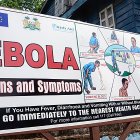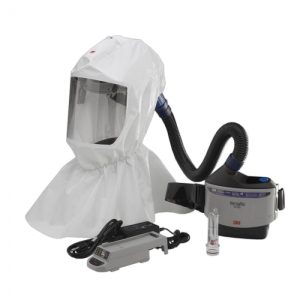
Oct 21, 2014
In the first of this three part series about the Ebola virus, we talked about the history of the disease, and a little about the pathophysiology of it. Now that we have a little background about it, let’s look at its signs, symptoms, and talk a little about the treatment of Ebola.
How Does a Person Catch Ebola?
As we touched on in part 1, Ebola is transmitted through direct contact with body fluids of a living or deceased infected person or animal. The list of fluids that traces of the Ebola virus have been found in it not a surprising one, and includes saliva, mucus, vomit, sweat, tears, breast milk, urine, feces, and semen. According to the Center for Disease Control and Prevention (CDC) the virus can live in body fluids for “several days” at room temperature, which brings up some serious conundrums when it comes to the pronouncement of patients with obvious signs of death that are encountered in the field.
This is why we need to stress the importance of universal precautions with every single patient that we encounter. The CDC tells us that transmission occurs through “direct contact” with bodily fluids. Direct contact means that “body fluids from an infected person have touched someone’s eyes, nose, or mouth or an open cut, wound, or abrasion.” While alarming, contact of body fluids with unbroken skin is at a very low risk for transmission of the disease.
The big concern right now that is being fueled by the mainstream media is the prospect of the Ebola virus becoming airborne. While it is known that it has not currently taken on that characteristic, as previously stated, traces of the virus has been found in saliva and mucus. While coughing and sneezing are not a commonly found with Ebola patients, should a patient with Ebola cough in the face of another individual, there is a risk that the disease could be transmitted.
What are the Symptoms?
Now that we know how the disease is transmitted, how can we tell if somebody has it? The alarming thing about Ebola is the symptoms that you will see in patients infected with the virus are quite familiar:
- Fever (greater than 101.5)
- Severe headache
- Muscle pain
- Weakness
- Diarrhea
- Vomiting
- Abdominal pain
- Unexplained hemorrhage.
I took a look at Flu.Gov to check out their documented symptoms which include:
- Fever (greater than 100)
- Cough and/or sore throat
- Runny or stuffy nose
- Chills
- Fatigue
- Nausea, vomiting, and/or diarrhea
You can see where there is a significant overlap with the pair, and how alarming it could be to some who encounter a patient infected with this year’s strain of the flu, especially with flu season currently knocking at our door. When determining a differential diagnosis, remember to also check their risk factors. The CDC tells us that in order for a patient to become a “Person Under Investigation” they don’t just need symptoms but need a social history that puts them at risk for contracting the disease. Some important questions you should think about asking your patients include:
- “Have you traveled recently?”
- “Have you been in close contact with anyone who has traveled out of the country?”
- “Have you noticed any unusual bleeding or traces of blood in your vomit or stool?”
The Risk for EMS
One of the scariest things about this disease is the level risk that we, as EMS providers, are subjected to. I did some research on the internet, and unfortunately could not find an answer to the million dollar question of “what level of exposure can I be subjected to and for how long and remain asymptomatic?” There is simply no answer to that question. The CDC has given us some guidance when it comes to risk classifying high risk and low risk exposures. A high risk exposure would include a dirty needle stick, or contact of body fluids with mucous membranes. Also included is direct skin contact (broken skin to infected body fluids) and direct contact with a dead body without appropriate PPE in a country where an Ebola outbreak is occurring.
Low risk exposures include household contact with an Ebola patient, and more importantly for us as medical providers, being within approximately 3 feet of an Ebola patient or within the patient’s room or care area for a prolonged amount of time without wearing recommended PPE. Casual contact such as hand shaking is also considered “low risk” in the absence of PPE. Being in their presence though, or passing by them is not considered “close contact.” Some call for more caution to be taken.
In a recent commentary released by the Center for Infectious Disease Research and Policy (CIDRAP) a strong recommendation was made advocating for “optimal respiratory protection” when coming into contact with infected patients. They state that:
“We believe there is scientific and epidemiologic evidence that Ebola virus has the potential to be transmitted via infectious aerosol particles both near and at a distance from infected patients, which means that healthcare workers should be wearing respirators, not facemasks.”
“Facemasks” of course would be the common operating room surgical masks. Their statement goes on to recommend:
“We strongly urge the US Centers for Disease Control and Prevention (CDC) and the World Health Organization (WHO) to seek funds for the purchase and transport of PAPRs (powered air-purifying respirator) to all healthcare workers currently fighting the battle against Ebola throughout Africa – and beyond.”
The matrix that the CIDRAP uses to determine the level of protection that a responder should wear is based on a Canadian control-banding approach and includes four parts:
- Identify the organism’s risk group
- Identify the generation rate
- Identify the level of control
- Identify the respirator assigned protection factor (APF)
Based on this rating scale, the team at CIDRAP evaluated two distinct stages of Ebola that one would encounter. In its early stages where it is largely asymptomatic, when encountering an Ebola infected patient it is recommended that a healthcare worker wears “level 1” protection which is classified as a “half-facepiece respirator” such as an N95 mask that is commonly issued for protection from tuberculosis. When caring for a patient in the later stages of the disease with symptoms such as vomiting, bleeding, and diarrhea containing blood, the CIDRAP recommends “level 4” protection which is defined as a respirator with an APF of “at least 50” or a “full-facepace air-purifying respirator” or a half-facepiece PAPR. Devices such as these are not commonly issued to EMS workers.
The bottom line of all of this is the CIDRAP recognizes that there may be some droplet risks when it comes to transmission of Ebola. Make yourself familiar with the infection control protections that your department is issuing as we face a potential Ebola epidemic in the United States. Also, always make sure your truck has your size of N95 mask, and even consider carrying one on your person, or multiple ones in your “first in” bag. Remember, you could potentially be in close quarters with one of these patients in the back of an ambulance. Take every precaution afforded to you to keep you and your partner safe.
How do we treat Ebola?
In the prehospital setting, treatment for an Ebola patient is going to be largely directed at their symptoms. Some may present like a patient in septic shock (febrile, hypotensive, tachypneic). Common treatment for that based on most protocols includes high flow oxygen, IV fluids, and potentially pressors. Add to that blood transfusions, and you have the core of treatment for Ebola The goal is to give the body the support it needs to fight off the disease. Experimental treatments are being tried on some of the most recently infected patients in the United States, but the details on exactly what those treatments entail is being kept pretty vague, or tight lipped for now.
In the third part of this series, we will take a look to the role of EMS in the fight against Ebola, and take a look at some things that we must think about both as providers and as a nation.
1. Q&A on Transmission Author: Center for Disease Control and Prevention October 2014
2. Signs and Symptoms Author: Center for Disease Control and Prevention October 2014
3. Case Definition for Ebola Virus Disease (EVD) Author: Center for Disease Control September 2014
4. Commentary: Health workers need optimal respiratory protection for Ebola Author: Lisa M. Brosseau, Sc D, and Rachael Jones, PhD September 2014
5. Flu Symptoms Author: Flu.gov Date unknown


